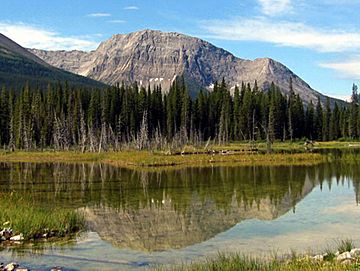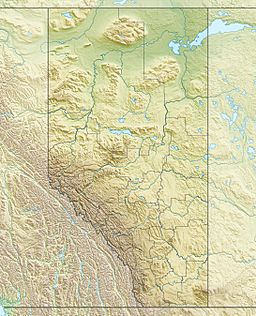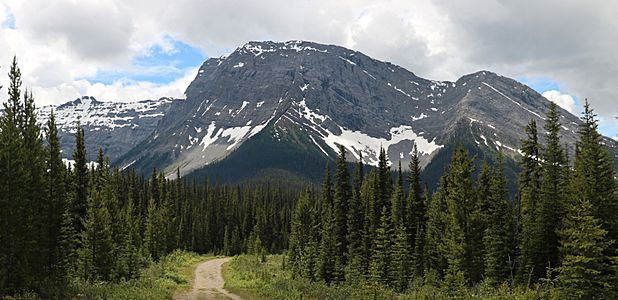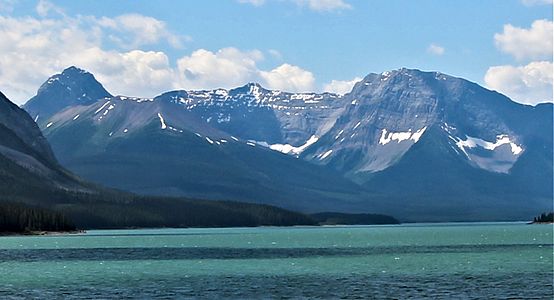Mount Shark facts for kids
Quick facts for kids Mount Shark |
|
|---|---|

Mount Shark, northeast aspect
|
|
| Highest point | |
| Elevation | 2,786 m (9,140 ft) |
| Prominence | 134 m (440 ft) |
| Parent peak | Mount Smuts (2938 m) |
| Listing | Mountains of Alberta |
| Geography | |
| Location | Alberta, Canada |
| Parent range | Spray Mountains Canadian Rockies |
| Topo map | NTS 82J/14 |
| Geology | |
| Age of rock | Cambrian |
| Type of rock | Sedimentary rock |
| Climbing | |
| Easiest route | Scramble |
Mount Shark is a mountain in Alberta, Canada. It stands 2,786-metre (9,140-foot) tall. This peak is found in the beautiful Kananaskis Country, right at the northern end of the Spray Mountains. It's also very close to the southern edge of Banff National Park, which is part of the amazing Canadian Rockies.
Even though it's near Banff Park, you can't see Mount Shark from the roads inside the park. However, you can get a good view of it from Alberta Highway 742, also known as the Smith-Dorrien/Spray Trail. The closest taller mountain to Mount Shark is Mount Smuts, which is about 3.0 km (1.9 mi) to the southeast.
Many mountains in Kananaskis Country got their names from a big sea battle during World War I. This battle was called the Battle of Jutland, and it involved many ships and people.
The Story Behind the Name
Mount Shark was given its name in 1917. It was named after a British warship called HMS Shark. This ship was a destroyer, which is a type of fast warship. Sadly, the HMS Shark was sunk by a torpedo from a German ship called SMS S54 during the Battle of Jutland in World War I. The name for the mountain was officially accepted in 1922 by the Geographical Names Board of Canada.
How Mount Shark Was Formed
Mount Shark is made of a type of rock called sedimentary rock. This rock formed over millions of years, from the Precambrian to the Jurassic periods. Imagine tiny bits of sand, mud, and shells settling at the bottom of ancient, shallow seas. Over time, these layers got squashed and hardened into rock.
Later, during a huge mountain-building event called the Laramide orogeny, these layers of rock were pushed up and over younger rocks. This is how the tall peaks of the Canadian Rockies, including Mount Shark, were created!
What's the Weather Like?
The weather around Mount Shark is known as a subarctic climate. This means it has very cold and snowy winters. The summers are usually mild. Temperatures can drop below −20 °C (−4 °F), and with the wind, it can feel even colder, sometimes below −30 °C (−22 °F). When snow melts or rain falls on the mountain, the water flows west into the Spray Lakes Reservoir.
Gallery





